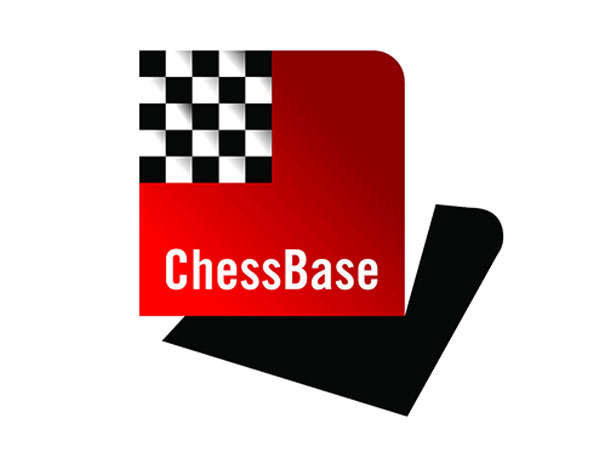


Winning starts with what you know
The new version 18 offers completely new possibilities for chess training and analysis: playing style analysis, search for strategic themes, access to 6 billion Lichess games, player preparation by matching Lichess games, download Chess.com games with built-in API, built-in cloud engine and much more.
 The
Modern Slav Modernized
The
Modern Slav ModernizedThe ABC of the Modern Slav, 2nd ed (DVD), by Andrew Martin, ChessBase, Video running time: 5 hours $32.95 (ChessCafe Price: $26.95)
With Martin you generally get what is advertised on the box. The current DVD on the Modern Slav (i.e. variations of the Slav where Black plays an early ...a6 and does not capture on c4) does not disappoint. It is what most club players want: an encouraging and clearly articulated introduction to a repertoire choice. However, if you are a 2200-player or above, the analysis and coverage will likely seem superficial and slight.
A note of caution, though: This is a re-release and update of a DVD initially produced several years ago. It is billed as a second edition, but I would quibble with this. It is really a re-packaging of the earlier DVD with a lengthy addendum of nine games to bring it up to date. A second edition of a book would involve extensive editing of the text throughout, not the mere addition of further chapters, however long. Likewise, a second edition of an eBook should have involved the re-recording or extensive revision of the games analyzed in the first edition with the updates interleaved with the content, so that the updates could be understood more clearly in the context of what they are updating. Most chess players would not be fazed by the breaks in continuity that would result, because it is the content that matters, not the clothes the presenter is wearing.

As it is on this DVD, the viewer is forced to skip back and forth between the older and newer material. There is also a dramatic difference in style between the two sets of material covered here. Aside from the obvious continuity issues, the games are treated more as a collection of interesting games worth studying by someone already familiar with the earlier material. The earlier games featured an almost uncanny ability by Black to equalize and gain the advantage. The score in these games was +14 –0 =3 to Black with another couple of lines that are not followed to the end of the game, leading one to wonder why everyone did not start playing the Modern Slav. The new material is more balanced (+4 –4 =1). There is less advocacy for the black pieces and more of an encouragement to enjoy and learn from both sides.
Martin explores the main variations starting from 1.d4 d5 2.c4 c6 3.Nf3 Nf6 4.Nc3 a6 (the Chebanenko Slav) but also 1.d4 d5 2.c4 c6 3.Nc3 Nf6 3.e3 a6 and the unconventional 3.Nf3 Nf6 4.e3 (a very popular line) 4...a6. There are also those lines of the Exchange Slav where Black plays the popular ...a6 in response. The entire complex is quite flexible, but not so varied that you need to understand many middlegame configurations. One distinctive type of position occurs when White plays an early c5 before Black has the opportunity to challenge the c-pawn with ...b5. Another is the exchange center when White captures on either d5 or b5 and Black recaptures with the c-pawn, and a third is a QGA-type position where Black plays ...c5 after developing his pieces. This latter idea often leads to isolated QP positions. That is pretty much it, and nine out of ten games starting with 1.d4, 1.Nf3 or 1.c4 might be funneled into such familiar variations, a godsend for lazy or busy club players. Martin gives several nuggets of wisdom to help you understand when to play one way and when to play another. For example, if White leaves the pawn on c4, Black should avoid b5 until the Nb1 comes to c3. (The idea is that White's dangerously disrupting a2-a4 can in that case be met by the counter-disruption b5-b4 followed by a queenside pawn sacrifice or expansion.)
Bizarrely, Martin spends some time in the first update game (Anand-Aronian, Moscow 2009) explaining the ideas of the opening all over again. It is a symptom, along with the introduction of one game that features the Schlechter Slav/Grunfeld, that the nine new games do not cohere in the way that the original nineteen do. The games are not presented in an order that reproduces the order of the variations in the first set and the result is to make Martin's recommendations seem undeservedly haphazard. That first game is spectacular, though, and worth reproducing even though it is not very typical of this solid system. Martin explains that Anand just forgot theory at move twelve and allowed Aronian to exchange White's powerful bishop, leading to an imbalance that won the game for him.
If you are interested in finding out more about the Modern Slav, which is a pretty self-contained defense for Black against 1.d4, you could definitely benefit from this perfectly positioned introduction. In fact the casual or improving club player could learn to play this defense from the DVD alone, with perhaps some lightweight personal research from time to time. There is really no need to supplement it with a book or personal database research as there would be if the defense were more dynamic and double-edged. The updated version is now a five-hour course and very good value for money, but if you have the earlier version, I am not sure that the nine new games fully warrant buying it again.
My assessment of this product: Good (four out of six stars)